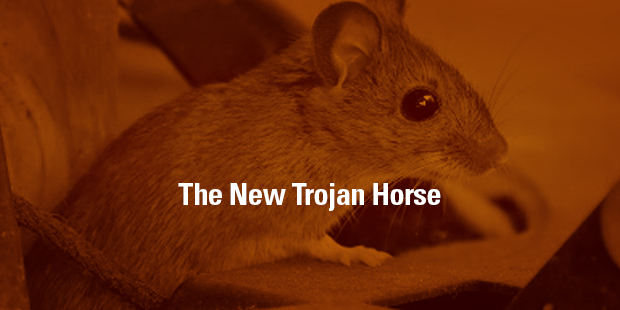
The New Trojan Horse
Editors Note: During our August focus on Guest Experiences, we are honored to have some of the best voices in the world of Customer Experience provide guest posts for the Vision Room. As you read the content below, simply think “Guest” in terms of the “customer” the author is talking about – and you will benefit from the knowledge and expertise of some great minds.
Are you challenged in your efforts to implement organization-wide changes to improve your culture, the employee experience, and the customer experience?
Have you considered how a Trojan Mouse might help you gain traction in these efforts?
Trojan Mouse. What is it? And how does it differ from a Trojan Horse?
Well, right off the top of my head it seems like “Trojan Mouse” elicits an image of smallness, speed, and agility, while “Trojan Horse” makes me think of a larger undertaking that is a bit slower and more labored – in both planning and execution – and likely rejected.
Let’s start with what a Trojan Mouse is. From TrojanMice.com:
Much change is of the “Trojan Horse” variety. At the top of the organisation a decision is taken to introduce a strategic change programme, and consultants or an internal team are commissioned to plan it down to the very last detail. The planned changes are then presented at a grand event (the Trojan Horse) amid much loud music, bright lights, and dry ice. More often than not, however, a few weeks later the organisation will have settled back into its usual ways and rejected much of the change. This is usually because the change was too great to be properly understood and owned by the workforce.
Trojan mice, on the other hand, are small, well-focused changes, which are introduced on an ongoing basis in an inconspicuous way. They are small enough to be understood and owned by all concerned, but their effects can be far-reaching. Collectively a few trojan mice will change more than one Trojan Horse ever could.
What do you think of that?
I am immediately drawn to these two sentences: More often than not, however, a few weeks later the organisation will have settled back into its usual ways and rejected much of the change. This is usually because the change was too great to be properly understood and owned by the workforce.
Trojan Mice seem like a great approach to implementing change for a variety of reasons:
- Trojan Mice address the last point in that second sentence – they are small enough to be understood and owned.
- We often talk about quick wins and showing some successes before we do a full roll out of a CX strategy. Those small wins, those quick wins, are great examples of Trojan Mice, allowing for gradual adoption of – and engagement with – the larger journey.
- Making small, nimble changes also limits risk or makes risk more tolerable as you design a new experience, develop new products, and find creative solutions to old problems. Think: fix fast, fail fast, fix fast.
- You can deploy various changes at the same time, which means you can test which ones work and which don’t – allowing you to quickly retract the ones that won’t have the intended impact, learn from them, and redeploy with updates. Again: fail fast, fix fast.
- Given that these changes are small and nimble, they will certainly help increase speed to market, i.e., you can get the solution out there quicker.
- Small changes that are quickly accepted, understood, and owned will add up and make for a bigger impact quickly – and over time – than rolling out a Trojan Horse that baffles people and is immediately rejected.
People hate change. And if they don’t know what it is or why it’s taking place, they ignore it; they certainly don’t want to be a part of it. Why not break it down for them, simplify it, and help them understand and own it.
As I’ve said before, improving the customer experience happens in baby steps; Trojan Mice – small, yet impactful, examples with tangible value – may just be the quickest way to successful adoption of the CX strategy and to transformation success.
Learn more about the power of connecting with your Guests – start a conversation with Guest Experience Navigator Bob Adams.

Tags: Annette Franz, Change, Church Guest Experiences, Guest Experiences, Trojan Mouse, change process












